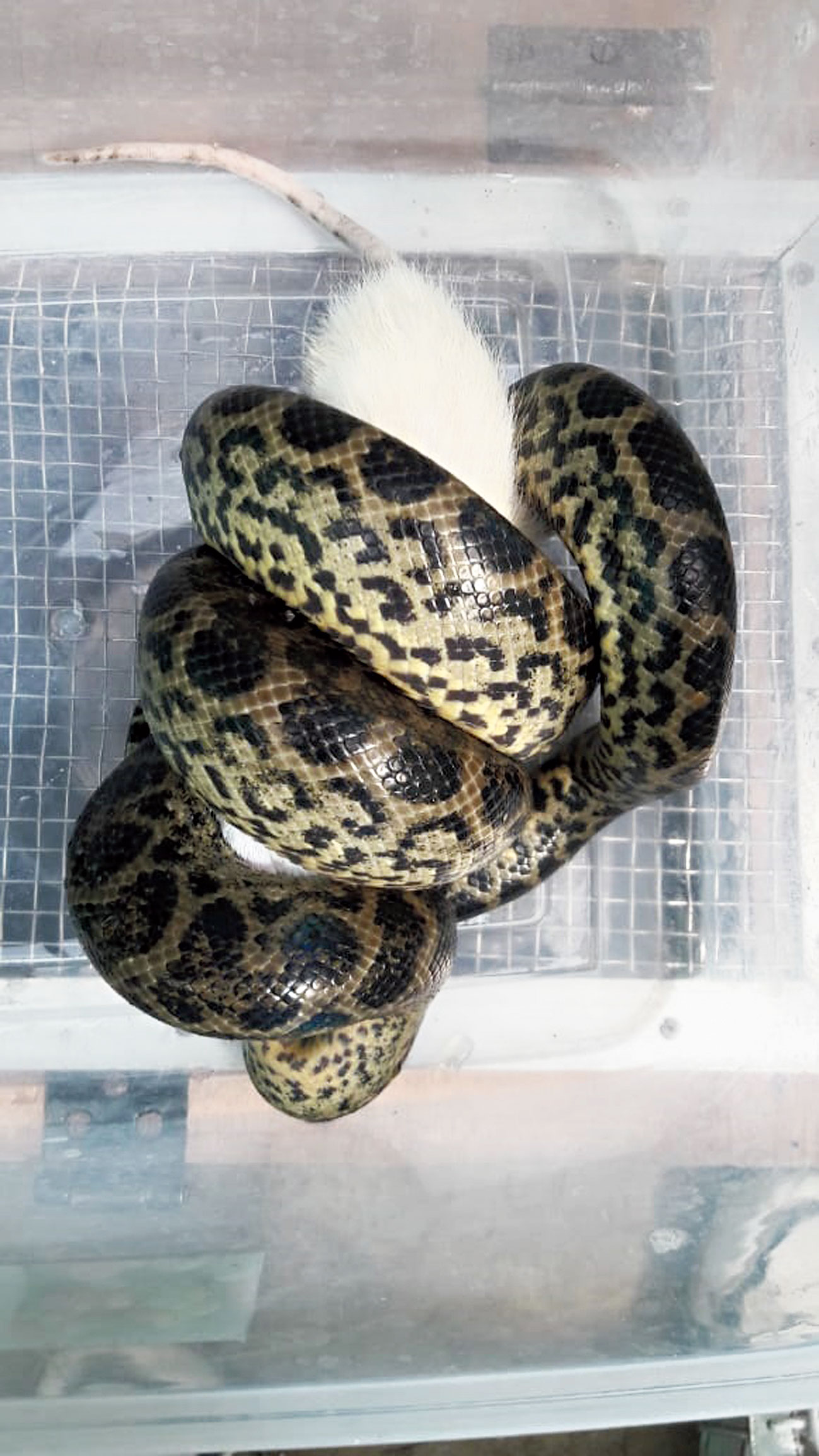A patch of Amazonian rainforest has come up here where four anacondas would be on display.
A new enclosure at the western corner of Alipore Zoo — 50ft long and 25ft wide — is full of orchids, ferns and other tropical plants.
A series of sprinklers attached to the roof are triggering “artificial rain” multiple times a day. A stream of water dribbles past a series of rocks and flows into a water body, around 30ft long, 3ft deep and 8ft wide at the centre. The enclosure has been built for the four yellow anacondas, which arrived at the zoo on June 13.
The non-venomous snakes were brought from the Madras Crocodile Bank and Centre for Herpetology in Mamallapuram, 58km from Chennai, where they had been bred in captivity.

One of the four yellow anacondas at Alipore zoo Pictures by Bishwarup Dutta
Yellow anacondas, found in Latin American countries such as Paraguay, Bolivia, Uruguay and Brazil, are so named because of their yellow-green colour with pairs of overlapping oval black spots. The pattern of yellow and black scales on the underside of the lower tail is unique to each snake.
An adult yellow anaconda grows over 9ft but is half the size of green anacondas, which are one of the largest snakes in the world and can measure anything between 19 and 30ft.
“The enclosure took four months to build. The idea was to replicate a patch of the Latin American rainforest habitat where anacondas are found,” said a zoo official. Yellow anacondas prefer aquatic habitats such as marshlands, swamps or banks of slow-moving rivers in tropical rainforests.
The water used in the enclosure is being recycled. Two pumps are constantly feeding water into the mouth of the stream. The water is then flowing into the water body. A couple of pipes are recycling the water to feed the two pumps.

“The enclosure took four months to build. The idea was to replicate a patch of the Latin American rainforest habitat where anacondas are found,” said a zoo official. Pictures by Bishwarup Dutta
A giant log of a dead tree placed on the water body branches out to the “land” in the enclosure. “Anacondas prefer spending time on such trees,” the zoo official said.
The four snakes, all between 3.5 to 4 years, are in quarantine at a shelter behind the new enclosure. They are on a diet primarily comprising white rats.
“The anacondas will be brought to the enclosure in the middle of this month,” said Asis Kumar Samanta, director of Alipore Zoo.
“Anacondas kill by squeezing the prey until it chokes. Like all snakes, they swallow the prey, head first. Their top and bottom jaws are attached to each other with stretchy ligaments that allow them to swallow animals wider than itself,” said a vet in the zoo, who is monitoring the quarantine.
Alipore zoo had sent eight snakes — two pairs each of monocled cobras and banded kraits — to the Chennai park, started in 1976 by herpetologist Romulus Whitaker, in exchange for the anacondas.










